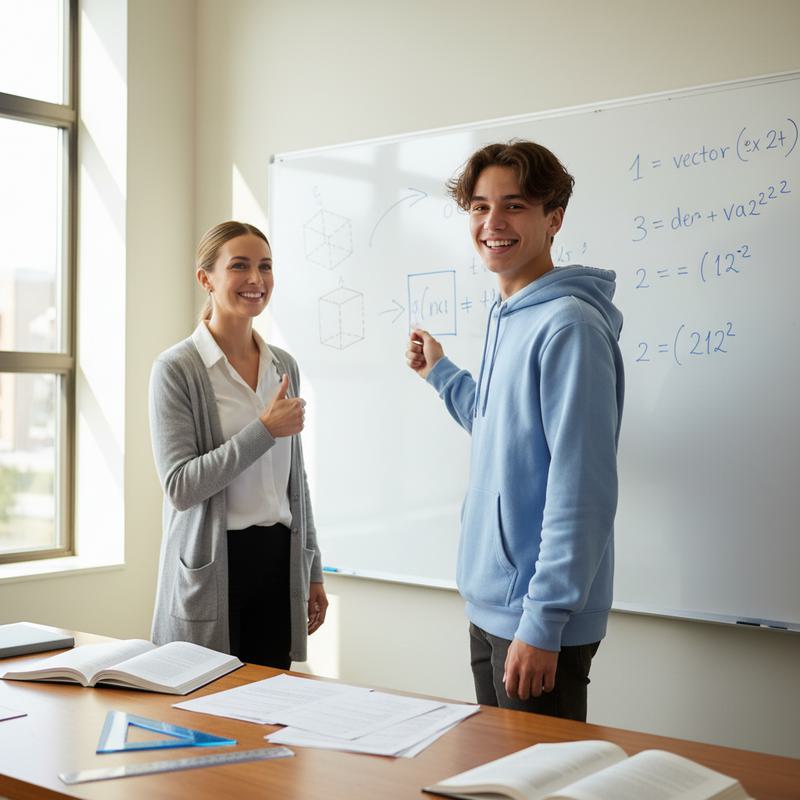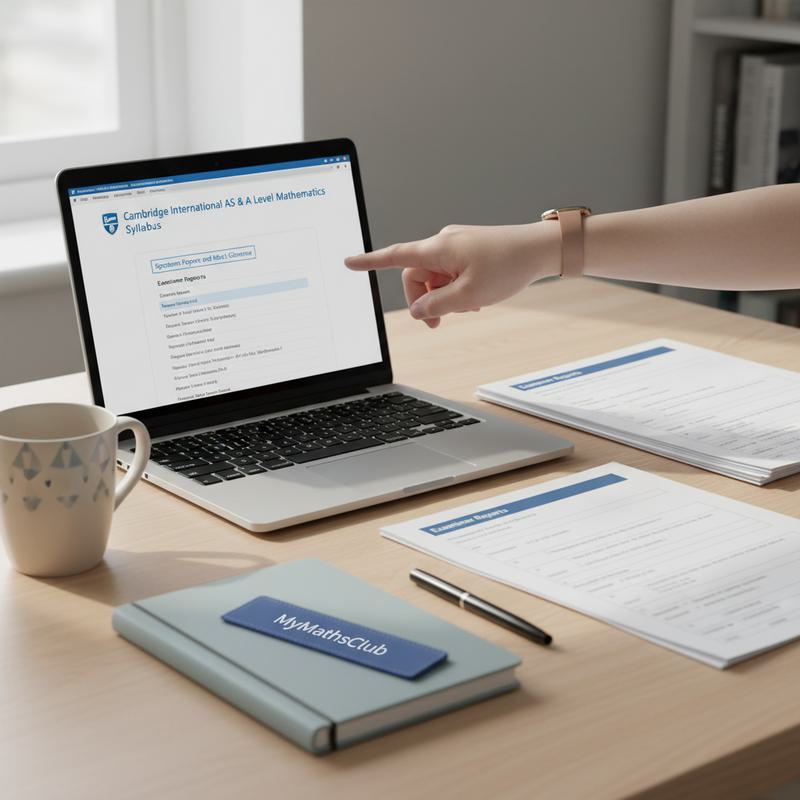Let’s be honest — stepping into CAIE A‑level Mathematics (9709) can feel like entering a VIP club where everyone knows calculus’s secret handshake. This guide strips the mystery away: clear roadmap, practical tips, and a few jokes to keep you sane while you learn to love limits.

Understanding CAIE A‑level Mathematics (9709): What to Expect
A‑level Maths is not just GCSE with an attitude. The CAIE A‑level Mathematics (9709) syllabus asks you to think, prove, model and explain — not simply crank out answers. The course divides into Pure Mathematics (the backbone), Mechanics (maths meets motion), and Probability & Statistics (making sense of data). Pure covers algebra, trigonometry, differentiation, integration, sequences and vectors. Mechanics applies those tools to forces and motion. Statistics teaches probability, distributions and inference.
Cambridge examines both what you know (AO1) and how you apply it (AO2). Memorising formulae helps, but if you can’t explain steps or choose an appropriate method, marks will vanish faster than your pencil in a locker. Aim to show reasoning clearly: examiners reward method marks as much as final answers.
Concrete tip: when learning differentiation, don’t only memorise \frac{\text{d}}{\text{d}x}[x^n] = nx^{n-1}. Derive it for small powers, generalise the reasoning, and practise explaining the steps aloud — that’s the difference between reciting and understanding.
- Read the official CAIE 9709 syllabus PDF early: https://www.cambridgeinternational.org/programmes-and-qualifications/cambridge-international-as-and-a-level-mathematics-9709/
- Practice questions, then verbalise or write the reasoning to strengthen AO2 skills.
- Treat Pure Maths as the foundation; get it solid before leaning heavily into options.

Bridging the Gap: From GCSE to A‑level
If GCSE is training wheels, A‑level hands you a bike and says, “Try a wheelie.” You’ll need confident algebra, comfortable graph-reading and solid trig basics. If you have IGCSE/GCSE, great — you’re halfway there. If you don’t, a focused 6–12 week crash course on core GCSE topics can save late-night panic.
Key pre‑A‑level skills to secure: factorising and solving quadratics; simplifying expressions and fractions; graph sketching (including y = ax^2 + bx + c); basic trig ratios and identities; and elementary probability. These bricks let you build calculus castles later without them toppling.
Example in practice: integration by substitution will stall if rearranging algebraic fractions is shaky. Fix algebra first, then substitution becomes far more straightforward.
- Spend 6–12 weeks on a GCSE→AS bridge if needed; focus on algebra, functions and graphs.
- Use short diagnostic tests to target weak spots rather than studying everything equally.
- Use micro-lessons (apps, 10–15 minute videos) or short tutor sessions to cement tricky manipulations.

Navigating the 2025–2026 Syllabus and Exam Format
Cambridge splits assessment into Pure papers (usually P1, P2, P3) and option papers for Mechanics (M1) or Statistics (S1, S2). Schools typically combine Pure with one option stream — choose Mechanics for physics/engineering leanings, or Statistics for data science and economics pathways. Exam sessions are usually June and November (March in India), so mark calendars and registration deadlines early.
Calculators are allowed but with limits: no CAS or internet-enabled devices. Use calculators for arithmetic and plots, but don’t let them do your reasoning. Examiners want to see your method, not your gadget’s magic.
Exam strategy example: on a three-hour paper, collect quick, sure marks first. Then return to harder problems. Because method marks are awarded, you can still score well even if final arithmetic slips.
- Confirm exact paper combinations and dates with your centre well in advance.
- Use only approved calculators and know their limits (check the syllabus guidance).
- Practice full timed papers under exam conditions to build stamina and timing sense.

Essential Study Strategies for Success
Maths is a practical subject: reading alone won’t build skill. Start by studying worked solutions, then close the book and recreate them. Tweak parameters in problems to test your understanding. Past papers and examiner reports are invaluable: they reveal examiners’ expectations and common pitfalls.
Mix topics to stay engaged and to strengthen connections between areas. Keep a “mistake log” — document every error, the correct method, and a short note on why it went wrong. Revisit that log weekly until repeats stop occurring. Time management matters: decide how long you’ll spend on a problem before moving on, and practise this in mock exams.
12‑week starter plan (practical):
- Weeks 1–4: consolidate algebra, functions, graphs and basic trig.
- Weeks 5–8: core calculus — differentiation, integration, and basic vectors.
- Weeks 9–10: choose Mechanics or Statistics fundamentals.
- Weeks 11–12: timed past-paper practice and targeted revision on weaknesses.
- Use Cambridge specimen papers and examiner reports as primary revision guides.
- Keep a mistake log and actively eliminate repeat errors.
- Simulate exam conditions with timed past papers at least once a month.

Overcoming Common Challenges in A‑level Mathematics
Expect a few stumbling blocks: proofs, 3D vectors, numerical methods and probability arguments are common tripping points. The cure is systematic practice and patience. Break big topics into micro-tasks: prove a single identity, solve a simple 3D vector projection, derive one numerical method step. Small wins add up.
Presentation counts in exams: show every step, box final answers, and label diagrams. Examiners often award method marks even when the final answer is off due to an arithmetic slip.
Rescue mission example: a student stuck on vector geometry revisited 2D vector basics for two weeks, used annotated diagrams when moving to 3D, and within a month shaved problem time down from an hour to 15 minutes.
- Break hard topics into tiny, manageable tasks and master them sequentially.
- Show clear working in exams — method marks are easier to secure than you think.
- Ask for help early: teachers, peers, focused tutoring or reputable online forums save time.

FAQ — Quick Answers to Common Questions
- Q: Is CAIE A‑level Mathematics (9709) much harder than GCSE?
- A: Yes — it’s deeper and requires proof, more modelling and stronger problem-solving. GCSE gives foundations; A‑level constructs the whole house.
- Q: How many papers will I sit?
- A: That depends on AS vs full A Level and the option stream your centre offers. Check the official syllabus and ask your exam centre.
- Q: What’s the best way to practise?
- A: Timed past papers, then review using examiner reports and mark schemes. Work deliberately on weak topics.
- Q: Can I start A‑level without GCSE?
- A: Possible but not ideal. Do a bridging course or focused IGCSE self-study first.
- Q: Are calculators allowed?
- A: Yes — but only approved non‑CAS types. No internet‑enabled devices unless explicitly permitted.
- Q: How are marks split between knowledge and application?
- A: Expect a roughly even split: AO1 (recall and routine methods) and AO2 (application and explanation).
- Q: Which option should I choose — Mechanics or Statistics?
- A: Pick Mechanics for physics/engineering, Statistics for economics, data science or social research.

Resources & References
- Cambridge International Syllabus and specimen papers: https://www.cambridgeinternational.org/programmes-and-qualifications/cambridge-international-as-and-a-level-mathematics-9709/
- Cambridge examiner reports and coursebook guidance: https://www.cambridgeinternational.org/programmes-and-qualifications/cambridge-international-as-and-a-level-mathematics-9709/published-resources/
- MyMathsClub syllabus guides and revision resources: https://mymathsclub.com
You’ve now got the map, a study plan, and some survival jokes — use them. Consistent practice, clear presentation and early help when you’re stuck will turn that nervous energy into exam-ready confidence. And yes, derivatives, integrals and probability questions — they will be on the test, but now you have the plan to tackle them.